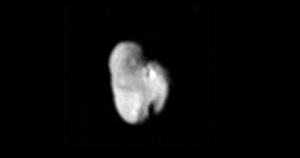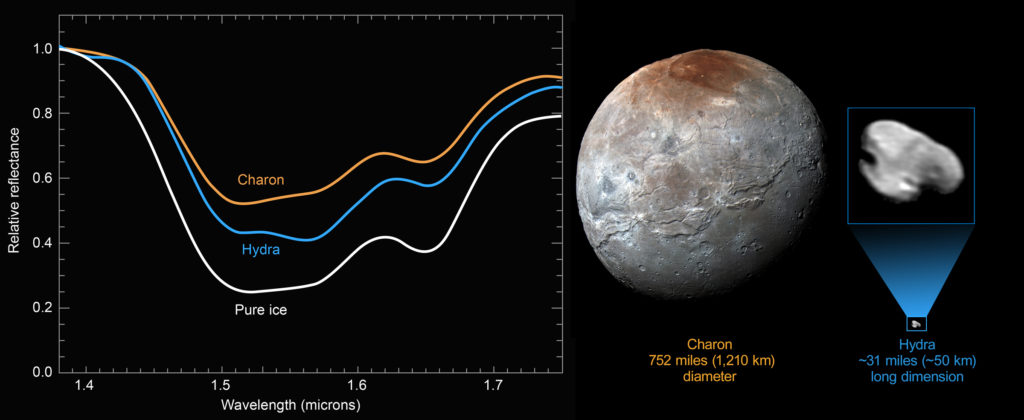
Nasa’s New Horizons Probe Spots Pristine Water Ice on Pluto’s Moon, Hydra
NASA’s New Horizons spacecraft has sent home the first-ever compositional data about Pluto’s four moons that shows the surface of Hydra, Pluto’s tiny outermost moon, is dominated by nearly pristine water ice. Scientists had previously suspected as much due to its highly reflective surface.
The new data, known as infrared spectra, shows the unmistakable signature of crystalline water ice. The Hydra spectrum is similar to that of Pluto’s largest moon, Charon, which is also dominated by crystalline water ice. But Hydra’s water ice absorption bands are even deeper than Charon’s, suggesting that ice grains on Hydra’s surface are larger or reflect more light at certain angles than the grains on Charon.

Pluto’s outermost small moon, Hydra is thought to have formed in an icy debris disk produced when water-rich mantles were stripped from the two bodies that collided to form the Pluto-Charon binary some 4 billion years ago.
Mission scientists are investigating why Hydra’s ice seems to be cleaner than Charon’s. “Perhaps micrometeorite impacts continually refresh the surface of Hydra by blasting off contaminants,” said Simon Porter, New Horizons science team member from Southwest Research Institute in Boulder in Colorado.
“This process would have been ineffective on the much larger Charon, whose much stronger gravity retains any debris created by these impacts,” Simon added in a Nasa statement.
The new compositional data was gathered by New Horizons from a distance of 150,000 miles (240,000 kilometers) on July 14, 2015. The New Horizons science team is looking forward to obtaining similar spectra of Pluto’s other small moons, for comparison to Hydra and Charon.